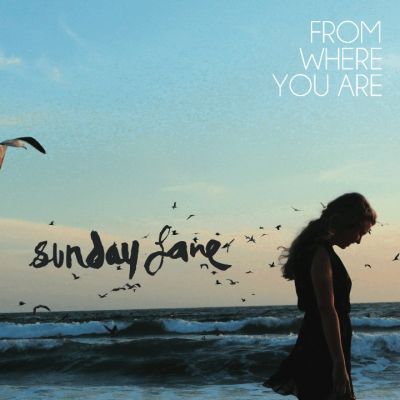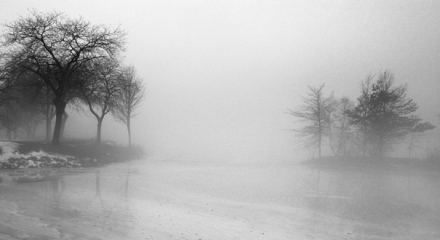Long May You Run, J. Tillman Revisited
(with 3 exclusive tracks from the new Slowcoustic tribute album!)

By definition, a great tribute album must hit the mark in both homage and realization, proving worth and worthiness of the original artist and his canon through song selection and composition, while still demonstrating the value and validity of reinterpretation through a well-arranged and well-performed tracklist.
It’s a high standard, and in a lifetime of cover-chasing, we’ve seen less hits than misses, more also-rans than outright successes. But a rarified few aim higher still. Keeping to the same genre or subgenre narrows the parameters further, offering a particular challenge to those who could easily drift towards mere reproduction. Adding in other rules – using only independent artists, for example – makes for even higher walls, with even greater possibility of faltering. By the time we consider the possibility of the track-by-track album tribute, we find ourselves on the razor’s edge of daring: few albums attempt such a fine focus, and of those few that have tried in the past, many fall flat on one count or another.
By this standard, Long May You Run, J. Tillman Revisited, Slowcoustic’s emergent homage to Tillman’s oddly titled seminal sophomore solo album, is a triumph of curation and performance: appropriately imperfect, definitively Tillman, and shockingly diverse. The songs it contains yaw through an unexpectedly broad gamut, given their inheritance, but all are worth keeping, and a surprising number are startlingly beautiful and broken. And today, we are pleased and honored to bring you not one, but three exclusive cuts from this potent collection as part of a gradual-release experiment orchestrated by Slowcoustic host and project curator Sandy, aka Smansmith.
 That Tillman’s album shaped Sandy’s own sensibility at “the unhurried side of Americana/Alt-Country/Folk/Indie/Down-Tempo music” is inherent in the project’s genesis; though there is an interesting diversity of interpretation here, unsurprisingly, as with the original, the mix here is almost universally lo-fi, and often quite raw; those looking for sweetly melodic, high-harmony singer-songwriter fare are missing the point.
That Tillman’s album shaped Sandy’s own sensibility at “the unhurried side of Americana/Alt-Country/Folk/Indie/Down-Tempo music” is inherent in the project’s genesis; though there is an interesting diversity of interpretation here, unsurprisingly, as with the original, the mix here is almost universally lo-fi, and often quite raw; those looking for sweetly melodic, high-harmony singer-songwriter fare are missing the point.
But there are more things in heaven and earth than sweetness and light, both in and beyond the boundaries of emotional depth and qualitative excellence which the Revisited project embody. For one thing, there is more here than one might expect from an album paying tribute to a small 11-track original. The lack of physical media limitations in the digital age have brought us an increasing number of full-album tributes that go beyond the track-by-track boundaries of the original album, and Long May You Run, Revisited is no exception: there are 20 tracks here, with as much as three versions of some songs, making it possible to compare versions, or mix-and-match to make the ideal mix depending on the listener’s mood – and making the album that much more open-ended, which also, in its own way, reflects the open-ended fragility of the solo singer-songwriter approach which J. Tillman took in this early release.
The second-hand title of the original album begs for coverage in ways too obvious to mention, of course. Even the slow-leak incidence of the homage pays fitting tribute to its origins, in that like the original, which was originally recorded in a borrowed basement in the dead of winter, and released in a tiny run of 150 in 2006, the tribute is finding its way into the world in small bursts. Our own effort herein, then, becomes like one of the multiple spaces in which Tillman wrote his songs – a compliment to the several features which Slowcoustic has shared over the last several days, and will continue to mete out for the remainder of the week, until we find ourselves fully able to appreciate that rarest of tribute albums: that which lasts, and stands on its own as both tribute and celebration.
Today, then, we offer a trio of tracks which, up until now, have been heard by none save the artists, and by Smansmith himself: two which complete the first pass at the full eleven tracks on the original, and a second cover of Trouble’s Always Free, which – in that it is more rugged, and more lonely, than the Small Sur version of the same song that Slowcoustic shared yesterday in Part III of the ongoing release – seems a perfect pairing for the quiet, almost demo-quality gems from underground iconoclastic Lexington, KY-based singer, songwriter, and multi-instrumentalist Doc Feldman and Cover Lay Down fave and Yer Bird recording artists Pickering Pick.
All three share much in common: male voices, sparse setting, and subdued, almost heroin sentiment. But each is beautiful, proving the viability and value in the project overall. Check out the tracks below, head back to Slowcoustic to read and collect more from the project, and then keep an eye on that space over the next few days as the remaining tracks hit the web.
Pickering Pick: Jamestown Bridge (orig. J. Tillman)
Doc Feldman: Wayward Glance Blues (orig. J. Tillman)
Quarter Mile Thunder: Trouble’s Always Free (orig. J. Tillman)
Our bonus tracks today come from outside the J. Tillman catalog, where we find his own 2010 full-album tribute to the formative influencer who shares credit for the original album title of both tribute and original above. Like today’s feature, Tillman Sings ‘Tonight’s The Night’ hits the mark; pick it up, and listen alongside Long May You Run, J Tillman Revisited to close the loop of coverage and blog-born tributaries.
- J. Tillman: Tonight’s The Night (orig. Neil Young)
- J. Tillman: New Mama (orig. Neil Young)
(from Tillman sings ‘Tonight’s The Night’, 2010)
3 comments » | J. Tillman, Tribute Albums, Tributes and Cover Compilations



 Underground Austinite
Underground Austinite  At 19 years old,
At 19 years old,  I posted a track from new husband and wife duo
I posted a track from new husband and wife duo  The phrase “folkpop darling”, which features prominently in
The phrase “folkpop darling”, which features prominently in  Can the world take yet another cover of Bon Iver’s Skinny Love? Begone, naysayers: though ragged and raw, there’s something about the warble in
Can the world take yet another cover of Bon Iver’s Skinny Love? Begone, naysayers: though ragged and raw, there’s something about the warble in 
 Though our own collection of post-millennial takers of the tradition trends towards greatness even before now, the addition of Mitchell and Hamer’s Child Ballads to the vast and varied is an apt kick-off to such a survey, and a special delight to boot. Fluid, engaging, clear as the running streams and lakes of its myriad stanzas, and equally adept in mournful darkness and moral tale, in its exquisite treatment of both the easily recognizable (Tam Lin) and several unusually obscure and under-covered selections, this new collection is rightfully on its way to being regarded as masterpiece, a showpiece for how modern solo and duet forms can still find life in the sourcebook.
Though our own collection of post-millennial takers of the tradition trends towards greatness even before now, the addition of Mitchell and Hamer’s Child Ballads to the vast and varied is an apt kick-off to such a survey, and a special delight to boot. Fluid, engaging, clear as the running streams and lakes of its myriad stanzas, and equally adept in mournful darkness and moral tale, in its exquisite treatment of both the easily recognizable (Tam Lin) and several unusually obscure and under-covered selections, this new collection is rightfully on its way to being regarded as masterpiece, a showpiece for how modern solo and duet forms can still find life in the sourcebook.